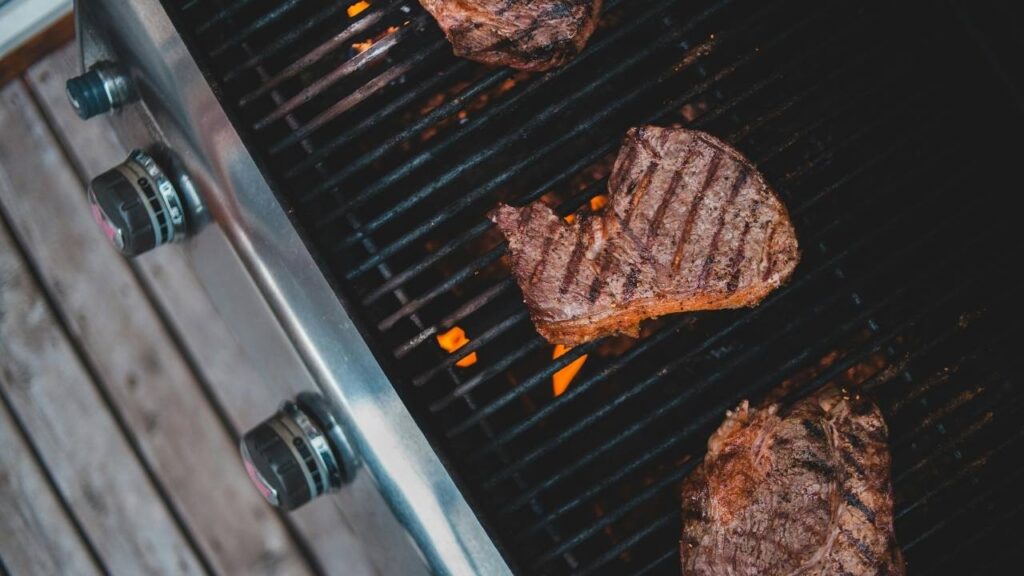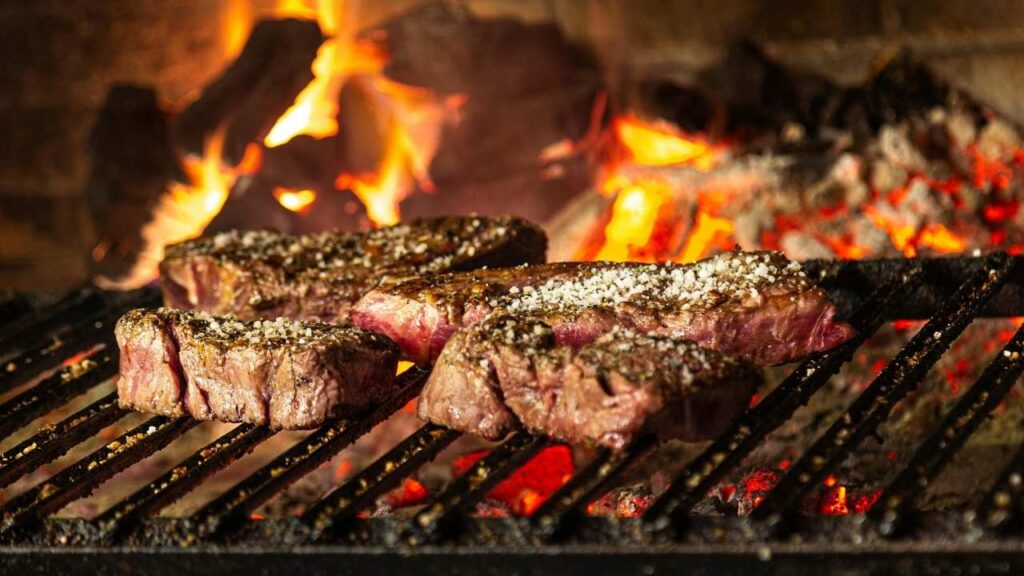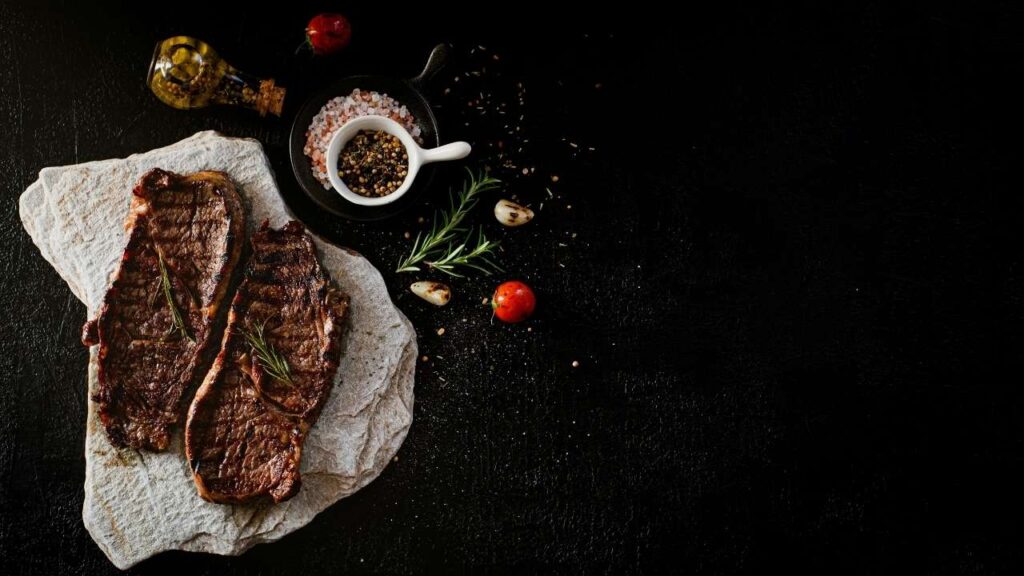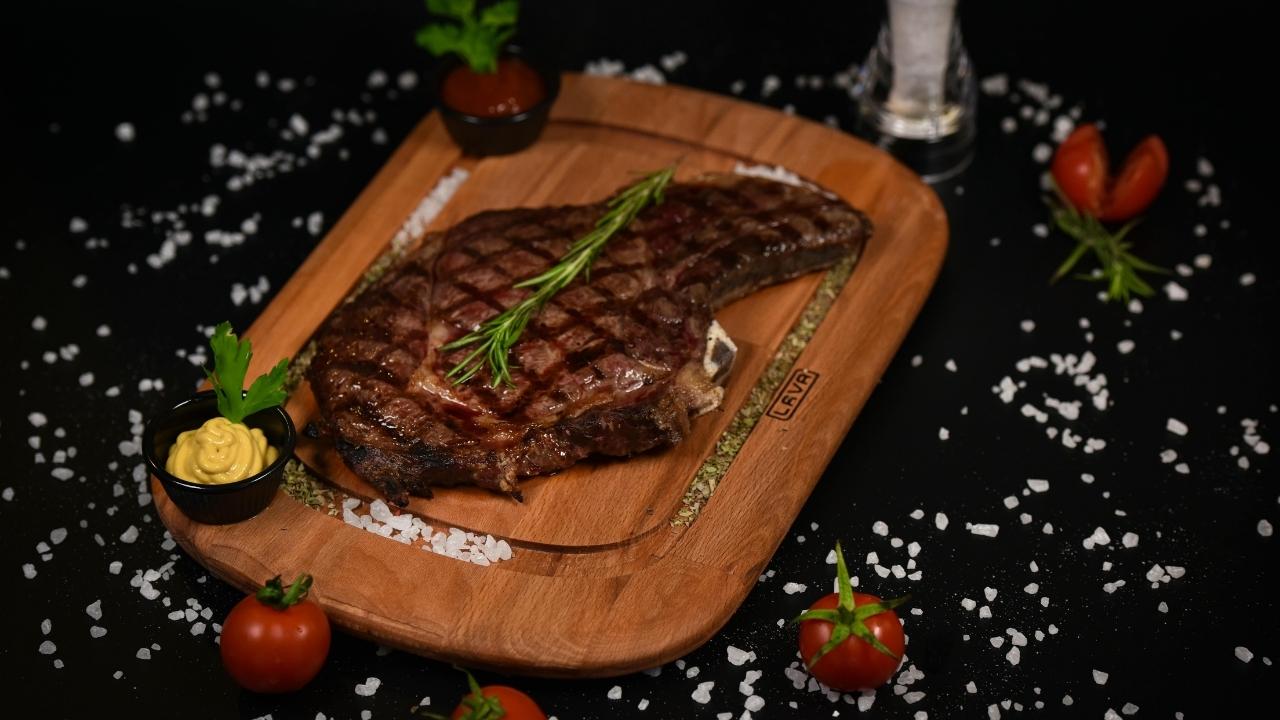For cooks seeking a deeply flavorful, budget-friendly roast that rewards low-and-slow mastery, the Beef Pikes Peak Roast is your secret weapon. Cut from the heel of the round, this underrated gem boasts richer, beefier taste than its pricier cousins—which is why savvy home chefs and professional kitchens alike treasure it. In this guide, we’ll decode everything you need to know: the cut’s Rocky Mountain roots, why its marbling and collagen promise sublime tenderness when braised, and a foolproof recipe that transforms this humble roast into a falling-apart masterpiece.
What Is Beef Pikes Peak Roast
The Pikes Peak roast is a particular cut of beef that comes from the round (the cow’s back leg) and is also called a heel of round roast. It’s taken from low in the round, just above the animal’s hock (the cow’s hind leg joint).
Origin of the name: The nickname “Pikes Peak roast” is thought to be geographically inspired. Some argue that it was popularized in Colorado (near the famed Pikes Peak mountain); others claim that it is merely a butcher’s term for the heel of a round cut. “Heel of round” or “Pikes Peak” on a beef label means the same cut, regardless of its naming. Don’t mistake it for a rump roast, however — a rump roast comes from the top rear leg and hip area, while the Pikes Peak (heel roast) is found just above the leg’s joint. This location difference results in the rump being a little more tender than the very lean heel of the round.
Characteristics that set Pikes Peak Roast apart
- Leanness: Pikes Peak roast is a lean cut with little body fat. There’s no heavy marbling as there is in a chuck roast. This leanness is healthy but also poses a greater risk of dryness if not cooked properly.
- Toughness: Being from an active muscle group in the leg, it’s by nature one of the tougher cuts of beef. This roast has a lot of connective tissue (collagen), which takes time to break down. When that proprietary collagen-rendering into gelatin happens during cooking, you end up with succulent, tender meat with deep flavor.
- Rich Beefy Flavor: The downside of all that connective tissue is big flavor. Low and slow cooking a Pikes Peak roast develops a deeply beefy, nearly earthy flavor. The heel of a round, despite being so lean, is often talked about as a great, flavorful pot roast.
- Size and Shape: These roasts are usually 3 to 5 pounds (1.5–2.5 kg) and may sometimes be triangular or shaped like a torpedo. They’re usually netted or tied by butchers to keep the muscle bits together, forming a uniform shape for roasting.

Pikes Peak Roast Cooking Guidelines
Because a Pikes Peak roast is lean and tough, the best cooking methods involve long cooking with moisture over low heat. For this cut, the mantra is “low and slow.” So here are the best ways to make this roast tender:
1: Crockpot Braising (Slow Cooker)
Using a slow cooker is one of the simplest and most foolproof ways to cook a Pikes Peak roast to fork-tender perfection. In a crockpot, low heat and dampness keep the meat slowly falling apart without losing moisture.
- How to Do It: Season the roast and brown it in a hot frying pan (optional but recommended for flavor). Put it in the slow cooker with a little liquid and aromatics, like onions, garlic and herbs. Cover and cook on LOW for 8–10 hours or HIGH for about 4–5 hours, until the roast is fork-tender. The internal fibers will gradually soften through the long cooking time, making the tough beef a tender pot roast.
- Why It’s Good: This slow cooker method is hands-off and reliable. It’s a meal you set in the morning and by dinner time you’ll have a delicious slow-cooked beef roast waiting for you. It’s great for busy cooks and produces reliably juicy results.
- Tip: Don’t open the lid while cooking, which lets heat out and could extend the time needed. Also, add enough liquid (a good 1 to 2 cups) to keep things moist. The roast will set free a lot of juices as it cooks, which meld into a flavorful braising liquid that can later be made into gravy.
2: Braise in the Oven (Low Temperature Braising)
It’s a classic approach, one that has been passed down for generations (it’s basically the traditional pot roast technique), involving oven-braising the Pikes Peak roast in a heavy pot or Dutch oven. This method is perfect if you have no slow cooker or you want to build a little more roasted flavor.
- How to Do It: Preheat your oven: You want it very low, between about 300°F and 325°F (149°C–163°C). In a Dutch oven or roasting pan on the stovetop, heat a tablespoon of oil, then sear the seasoned roast on all sides until browned. Take the pot off the heat and pour in braising liquid (e.g., beef stock, a splash of red wine or coffee, a little Worcestershire or soy sauce for depth). If desired, add vegetables (carrots, onions, potatoes) around roast. Cover the pot with a snug-fitting lid. Place in the oven to roast for about 3 to 4 hours, or until the meat is extremely tender. Look toward the end of the cooking process — when a fork goes in easily and the meat is almost coming apart — it is cooked. Shoot for an internal temp somewhere around 190°F (88°C) for that ultra-tender texture.
- Why It’s Great: Braising in a pot leads to deep flavor development, as long as you deglaze (scrape browned bits off bottom of pot after searing). The dry heat of the oven and the moist heat within the covered pot results in a succulent roast. And the whole house will smell (absolutely) amazing as it cooks.
- Tip: If you have one, use a heavy cast iron Dutch oven because it holds and distributes heat well. After cooking, rest the roast for 15–20 minutes before slicing or shredding — this allows the juices to redistribute.
3: Pressure Cooker (Instant Pot)
If you’re short on time but want results that are as tender as possible, a pressure cooker or Instant Pot can be a game changer. Pressure cooking drastically reduces cooking time by cooking at a higher pressure and temperature, which can make tough cuts tender more quickly.
- How to Make It: Season and (optionally) sear the Pikes Peak roast, using the Sauté function on your pressure cooker. Add your liquid (at least 1 to 1.5 cups broth or water) and aromatics. Seal up the cooker and cook on high pressure for about 60–70 minutes for a 3–4 lb roast (check your pressure cooker’s guidelines). Let the pressure release naturally for 10-15 minutes then quickly release the remaining pressure. Check the roast — it should be fork-tender; if not, you can cook under pressure another 10 minutes.
- Why It’s Good: You can get done in one hour what you may take 3-8 with other methods. It’s ideal for spur-of-the-moment dinners. The enclosed nature also locks in all flavors and moisture.
- Tip: Use the remaining liquid after pressure cooking to make a fast gravy (toss in cornstarch slurry and simmer). And don’t put too many vegetables in the pressure cooker — you can cook veggies separately or add carrots/potatoes during the last 20 minutes of cooking to ensure they don’t go from crunchy to mushy.)

Recipe: Slow-Cooked Beef Pikes Peak Roast (Hearty Pot Roast Style)
Here is a recipe to make a traditional slow-cooked Pikes Peak roast that is fork-tender and full of flavor. We’ll rely on a slow cooker for convenience, though you can adapt to an oven or Instant Pot as indicated. It’s just the thing for a cozy family dinner or a festive Sunday dinner.
Ingredients
- 3–4 lb Pikes Peak roast (heel of round roast)
- 2 teaspoons salt, or to taste
- 1 teaspoon black pepper, or to taste
- 2 tsp garlic powder (or 4 cloves fresh garlic, minced)
- 1 teaspoon dried thyme (or rosemary; optional, for perfume)
- 2 tablespoons cooking oil (vegetable or olive oil or for searing)
- 1 large onion, peeled and sliced through the bulb into thick slices or cut into chunks
- 4 carrots, peeled and cut into large chunks
- 2 stalks celery, cut into chunks, optional
- 1 cup beef broth (or 1 bouillon cube dissolved in water)
- 1/2 cup red wine (this is optional, you can swap with more broth or use 2 Tbsp Worcestershire sauce for depth)
- 2 tablespoons Worcestershire sauce (optional omitting if adding wine; lends umami flavor)
- 2 bay leaves (optional)
- 2 tablespoons cornstarch (to thicken gravy, optional)
- 2 tablespoons water (for gravy slurry, optional)
P.S. Potatoes (4 halved gold potatoes) can also be added to this recipe. If using, add them to the cooker along with the other veggies.
Instructions
- Season the Roast: Season the RoastPat the Pikes Peak roast dry with paper towels. In a small bowl, combine the salt, pepper, and garlic powder (and whatever else you like). Spread this seasoning mixture all over the roast, on all sides. For added flavor, you can also do this step a few hours ahead of time or the night before and allow the roast to sit seasoned in the refrigerator (this dry brining will aid the penetration of the seasoning).
- Prepare the Slow Cooker: Place the onions, carrots and celery (and potatoes if using) in the bottom of your slow cooker. Nestle the seared roast atop the bed of vegetables. The vegetables not only help create a great tasting base, but keep the meat from sticking to the bottom. Nestle the bay leaves around the roast (if using).
- Add Liquid: Our the beef broth and red wine into the cooker over the roast (if you’re using wine, it will cook off and tenderize the meat a bit; if not, add the Worcestershire sauce, and ensure you have about 1 1/2 cups liquid total in the cooker). The liquid should rise to about 1/3 of the roast’s height – you don’t need to fully cover the meat, just enough to create steam/juices.
- Slow Cook: Place lid on slow cooker. Cook on LOW for 8-10 hours or HIGH for 4-5. Do not open the lid during cooking, the first few hours especially, as that causes a major drop in temperature. As it cooks, the tough connective tissues will gradually dissolve.
- Check and Rest: When everything is done, gently take the Pikes Peak roast out of the slow cooker and set it on a cutting board or platter. Loosely tent it with foil and rest it for about 15 minutes.
Recipe Notes:
- Oven Method: Heat the dutch oven on the stovetop over medium heat. This is a recipe you can bake in the oven. Proceed with seasoning and searing, then combine everything in a large Dutch oven or roasting pan. Cover tightly (with lid or foil) and bake in a preheated oven at 325°F (163°C) for about 3 hours (check at 2.5 hours). Just add a little extra liquid, if required, while cooking. It’s done when fork-tender.
- Instant Pot Step: For pressure cooker, sear in Sauté function, then cook high pressure for ~60 minutes natural release. You make the quick gravy by turning sauté on after you pressure cook.
- Flavor Variations: You can switch up the seasoning. You could use your go-to beef spice blend or butcher’s rub instead of a simple salt/pepper/garlic rub. Indeed, there are even recipes for a specific Pikes Peak roast seasoning blend, which is usually a combination of cracked black pepper and/or black pepper, salt, garlic, onion and perhaps some paprika — any robust beef seasoning will do.

Tips for Seasoning and Marinating Pikes Peak Roast
Some tips on seasoning and marinating this cut:
- Dry Rub for More Flavor: Since this roast is thick muscle, the best way to flavor it is with a surface seasoning or dry rub. A generous sprinkling of kosher salt, cracked black pepper and garlic powder is a simple but effective treatment. For a touch of heat, sprinkle in some paprika, onion powder, and a touch of cayenne or chili powder. Rub over the roast and let sit. Even just letting it sit for 30 minutes at room temperature before cooking will allow the salt to begin to penetrate.
- Season the Cooking Liquid: Don’t leave your braising liquid in the hands of fate. Bland broth begets bland roast. Add aromatics and seasoning to the pot: bay leaves, onions (sliced), celery, carrots, smashed cloves of garlic and herbs such as thyme or rosemary will all add flavor to the broth. A splash of Worcestershire sauce, soy sauce or tomato paste will provide umami — that savoriness that makes the gravy and meat taste fuller. These are going to mingle with the meat’s juices and transform into delicious sauce by the end of the cooking.
- Mind the Salt: If you are using store-bought broth, or adding salty ingredients (like soy sauce), be careful what other salt you add. It is much easier to sprinkle on a little salt at the end than to repair an over-salted roast.
- The Do’s and Don’ts of a Meat Thermometer: Besides seasoning, one tip for preparing any roast is to use a meat thermometer to check for doneness. You’ll generally be shooting for about 190°F internal for fork-tender meat. By then, seasoning you applied early in the process will have seeped into the juices, will have flavored the inner layers of the meat.
Serving Suggestions for Pikes Peak Roast
Below are some serving ideas and pairings to really satisfy your dinner with a Pikes Peak roast:
- Classic Pot Roast Dinner: Thick slices or pulled chunks of Pikes Peak roast come to your table with the carrots, onions and potatoes it cooked with. Spoon the savory gravy over everything. A side of creamy mashed potatoes or buttered egg noodles will help sop up that sauce. Add a splash of color and freshness with a sprinkle of fresh-parsley leaves.
- Shredded Beef Sandwiches: If you want, shred the roast (it should come apart easily if cooked until really tender) and pile it on toasted buns. This is such good meat for roast beef sandwiches. You could even crown it with provolone or cheddar cheese for a melty beef sandwich, or some pickled onions/jalapeños for contrast. Shredded Pikes Peak roast also mimics the flavor of Southern-style pulled beef — great with tangy barbecue sauce on a bun for something different.
- Tacos or Burritos: Season the shredded beef with a touch of cumin, a sprinkle of chili powder and some lime juice, and then use it to fill out tacos or burritos. Top with salsa, avocado, and cilantro, if desired. The beef is rich and makes a good substitute for barbacoa.
- Stir Into Pasta or Soup: Pieces of the leftover roast can be cut small and swirled into a beef-and-vegetable soup, or combined in a hearty ragu to go over pasta. The slow-cooked beef deepens the flavor of any stew or casserole. One option: Use the shredded beef and gravy to sauce wide egg noodles (sort of a rustic beef stroganoff, if you fold a spoon of sour cream into it).

Conclusion:
Beef Pikes Peak Roast is a juicy and delicious cut that you will want to have in your cooking arsenal. The tender texture and rich, beefy taste, achieved through lengthy cooking methods, make it a juicy example of the mouth-watering meal. No matter if you choose the hands-off method of the slow cooker, the rich flavor of slow oven braising or the rapid efficacy of a pressure cooker, this cut becomes an excellent, tender roast that’s ideal for a family dinner or a celebratory feast.
Seasoned well, cooked low and slow and with a bit of patience, the Pikes Peak roast will yield a meal that is equally comforting and show-stopping. Pair it with classic sides or think outside the box: sandwiches, tacos or even pasta dishes — it knows no bounds. Try this cheap but delicious hunk of flesh and you’ll quickly understand why it’s beloved by home cooks and chefs alike.
FAQs
Is a pike’s peak roast a good cut of meat?
The flat shape enables quicker thawing than thicker roast forms. The flat shape of this piece of meat provides excellent flexibility for preparing cutlets to use in chicken fried steak while also making it suitable for grilling after marinade application.
What cut is the pike’s peak?
The Pikes peak roast originates from the lower part of the round section and includes numerous small muscles and extensive connective tissue. Proper preparation for this cut includes low-heat cooking over an extended period of time which develops strong taste and softens the texture.
Does a pike’s peak roast have a bone in it?
Pikes Peak roast which comes from a section beneath the rump area presents itself as a lean cut of meat. To preserve the natural flavor you need to cook the Pikes Peak roast within liquid to keep it from drying out. It is a boneless roast.
What is the toughest cut of roast beef?
Rump roast constitutes a part of the round primal section that functions as one of the tougher lean meat roast cuts available. Both beef cuts warrant braising or low-temperature cooking because they reach their best flavor through this method.
What part of the cow is pike’s peak roast?
From the region near the hock sits the Pike’s Peak which authors refer to as Heel of round roast . When using the braising method this roast transforms into a delicious pot roast with considerable flavor.
